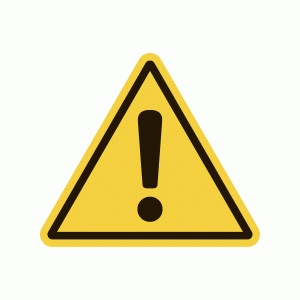
A majority of California voters in 1986 approved a ballot initiative known as Proposition 65, officially titled California’s Safe Drinking Water and Toxic Enforcement Act of 1986 (“Prop. 65”). Prop. 65 seeks to protect California’s drinking water sources from being contaminated with chemicals known to the State of California to cause cancer, birth defects or other reproductive harm and seeks to require businesses to warn when they knowingly and intentionally cause significant exposures to listed chemicals known to cause such harm. In general terms, Prop. 65 requires businesses, manufacturers and certain others (such as employers) to inform Californians about exposures to such chemicals. This is done through warning signs and warning labels. The purpose of this blog post is to provide an overview of Prop. 65 for companies who do business in California and to highlight some major changes to Prop. 65 which take affect later this year.
The scope of Prop. 65 in California cannot be overstated. Warning signs and labels are found in many types of businesses in California from bakeries to amusement parks to grocery stores. You may also see Prop. 65 warnings on apartment buildings and commercial buildings. Products themselves also carry warnings. Common examples include leaded glass crystal, garden hoses and shovels, electrical cords, and ceramics (just to name a few).
Prop. 65 can be enforced not only by the State of California, but also by private individuals and groups acting in the public interest. Private enforcement is an entire business and industry with law firms solely dedicated to these types of cases. Enforcers are able to recoup a portion of the penalties paid through settlement of these claims and recoup their attorney fees as well.
The enforcement process begins when a Prop. 65 60-Day Notice is sent to the alleged violator. This letter is also sent to the California Attorney General’s Office. During this 60-day period, the Attorney General can decide if it wants to prosecute an action. If the Attorney General does not take action, the private enforcer may file suit at the end of the 60-day period. These notices are published on the Attorney General’s website. Read more ›

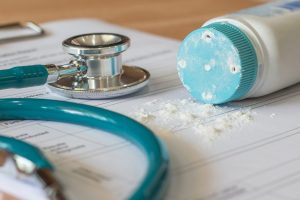 The Supreme Court limited a striking vulnerability for product manufacturers in Bristol-Myers Squibb Co. v. Superior Court of California this summer when it ruled that out-of-state plaintiffs could not simply claim injuries that were similar to residents to support specific jurisdiction, but must demonstrate a connection between the forum and the specific claims at issue. That decision was used by a Missouri appeals court last month to reverse a $72 million verdict against Johnson & Johnson which found the company’s talc products cause ovarian cancer. Several other hefty St. Louis jury awards involving the company’s talc products could now face the same fate.
The Supreme Court limited a striking vulnerability for product manufacturers in Bristol-Myers Squibb Co. v. Superior Court of California this summer when it ruled that out-of-state plaintiffs could not simply claim injuries that were similar to residents to support specific jurisdiction, but must demonstrate a connection between the forum and the specific claims at issue. That decision was used by a Missouri appeals court last month to reverse a $72 million verdict against Johnson & Johnson which found the company’s talc products cause ovarian cancer. Several other hefty St. Louis jury awards involving the company’s talc products could now face the same fate.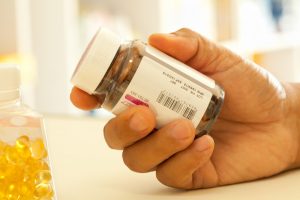 Often when we think of product liability we think of a product that doesn’t function as intended and causes some sort of damage resulting in warning, design and/or manufacturing defect claims. However, another important aspect is advertising. The purpose of this post is to focus on one very important aspect of the false advertising case: scientific substantiation.
Often when we think of product liability we think of a product that doesn’t function as intended and causes some sort of damage resulting in warning, design and/or manufacturing defect claims. However, another important aspect is advertising. The purpose of this post is to focus on one very important aspect of the false advertising case: scientific substantiation. On July 13, 2017, the U.S. House of Representatives passed a bill that would triple the amount of time in which medical device manufacturers are required to report certain malfunctions of some products to the Food and Drug Administration. Companies currently must report product malfunctions within 30 days; the new bill would allow companies up to 90 days to do so. Notably, the proposed legislation does not change the amount of time for medical device manufacturers to report adverse events in which a patient has been injured or died. Companies would still be required to report such adverse events within 30 days.
On July 13, 2017, the U.S. House of Representatives passed a bill that would triple the amount of time in which medical device manufacturers are required to report certain malfunctions of some products to the Food and Drug Administration. Companies currently must report product malfunctions within 30 days; the new bill would allow companies up to 90 days to do so. Notably, the proposed legislation does not change the amount of time for medical device manufacturers to report adverse events in which a patient has been injured or died. Companies would still be required to report such adverse events within 30 days.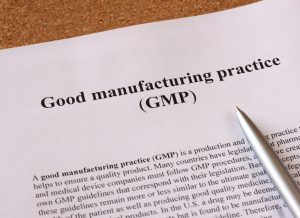 A Michigan district court judge determined last week that product liability claims against an FDA approved medical device manufacturer were preempted by federal law, but allowed the plaintiff’s claim of fraud against the manufacturer, Medtronic, Inc., to proceed at the state level. Although the court determined that plaintiff’s parallel state law product claims were insufficiently pled to survive preemption, it disagreed with the manufacturer that Current Good Manufacturing Practices (“CGMPs”) are too broad to potentially serve as the basis for parallel product liability claims in state court – a crack in the preemption door worth noting. The court similarly refused to hem in the plaintiff’s parallel claim of fraud despite the most general assertions of malice, knowledge and intent with respect to the manufacturer’s product representations. The case is Canary v. Medtronic, Inc., No. 16-11742, 2017 WL 1382298 (E.D. Mich. April 18, 2017).
A Michigan district court judge determined last week that product liability claims against an FDA approved medical device manufacturer were preempted by federal law, but allowed the plaintiff’s claim of fraud against the manufacturer, Medtronic, Inc., to proceed at the state level. Although the court determined that plaintiff’s parallel state law product claims were insufficiently pled to survive preemption, it disagreed with the manufacturer that Current Good Manufacturing Practices (“CGMPs”) are too broad to potentially serve as the basis for parallel product liability claims in state court – a crack in the preemption door worth noting. The court similarly refused to hem in the plaintiff’s parallel claim of fraud despite the most general assertions of malice, knowledge and intent with respect to the manufacturer’s product representations. The case is Canary v. Medtronic, Inc., No. 16-11742, 2017 WL 1382298 (E.D. Mich. April 18, 2017). In one of our recent posts we touched on punitive damages in the context of one of the Pinnacle Hip bellwether trials. In this post, we address another interesting aspect of punitive damages: whether they can be used to punish a defendant for harms to nonparties. The short answer is no, but as discussed below, it is not as straightforward as you might think and it is essential to protect yourself with the proper jury instruction.
In one of our recent posts we touched on punitive damages in the context of one of the Pinnacle Hip bellwether trials. In this post, we address another interesting aspect of punitive damages: whether they can be used to punish a defendant for harms to nonparties. The short answer is no, but as discussed below, it is not as straightforward as you might think and it is essential to protect yourself with the proper jury instruction.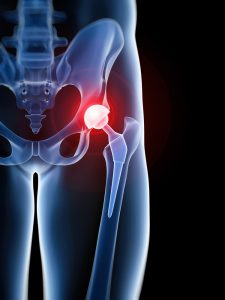 In a staggering verdict, a Texas jury recently awarded over $1 billion against Johnson & Johnson (“J&J”) and its subsidiary DePuy Orthopaedics Inc. (“DePuy”) (collectively referred to as “Defendants”) to six California plaintiffs who claimed the companies’ Pinnacle hip system’s Ultamet metal-on-metal implant caused metallosis, tissue death, bone erosion and other serious injuries.
In a staggering verdict, a Texas jury recently awarded over $1 billion against Johnson & Johnson (“J&J”) and its subsidiary DePuy Orthopaedics Inc. (“DePuy”) (collectively referred to as “Defendants”) to six California plaintiffs who claimed the companies’ Pinnacle hip system’s Ultamet metal-on-metal implant caused metallosis, tissue death, bone erosion and other serious injuries.